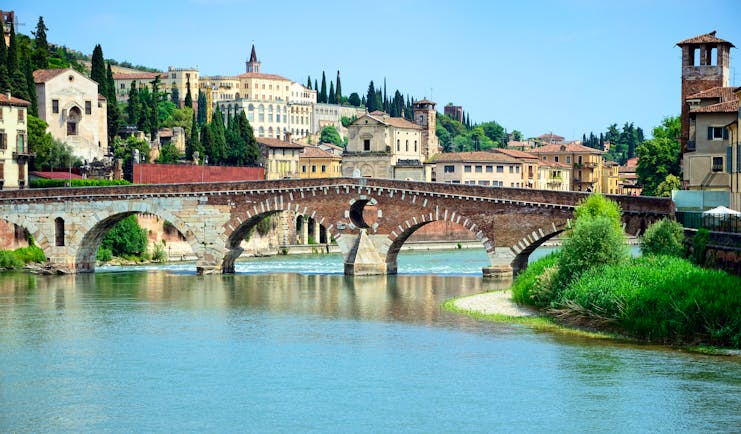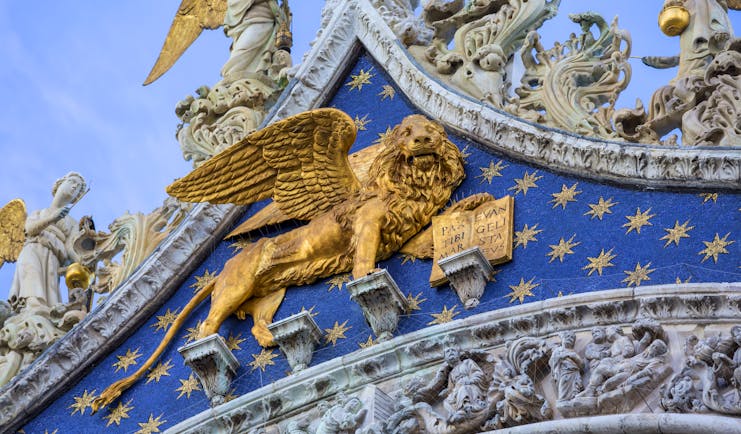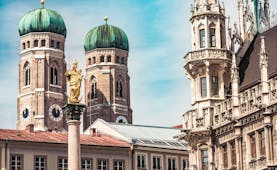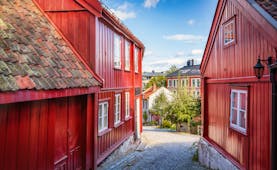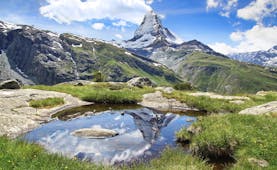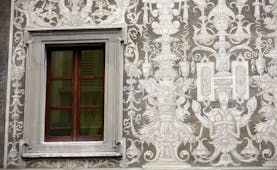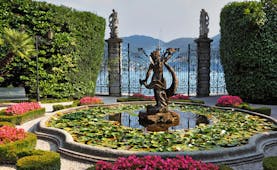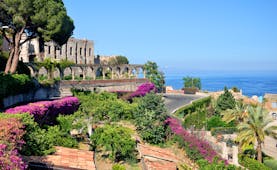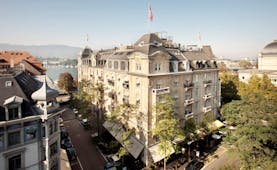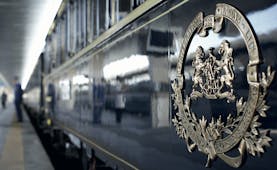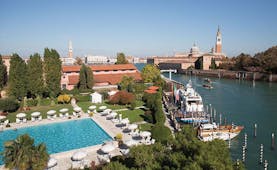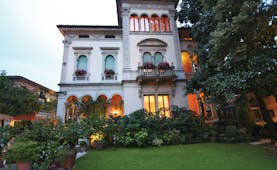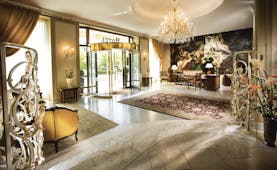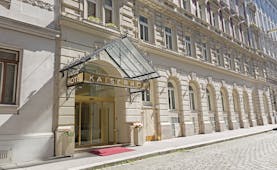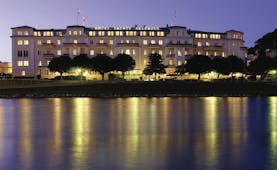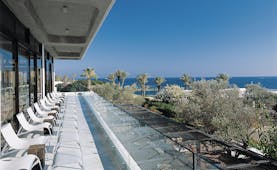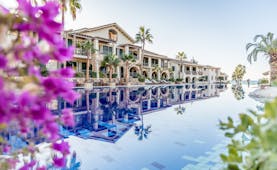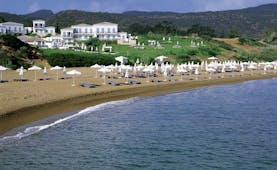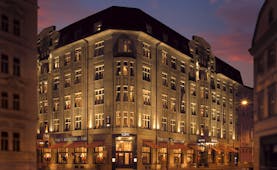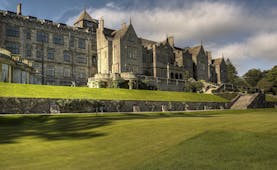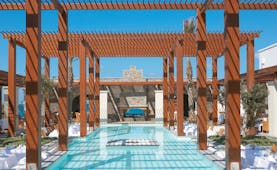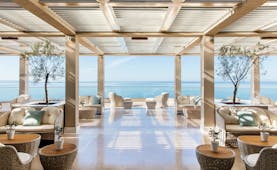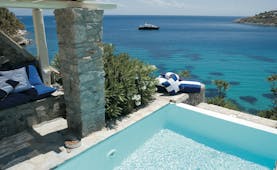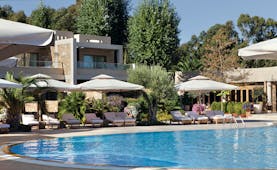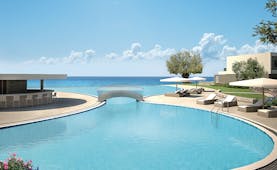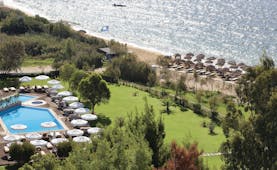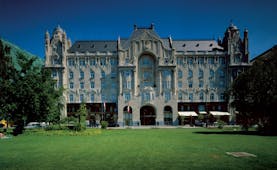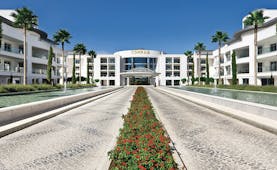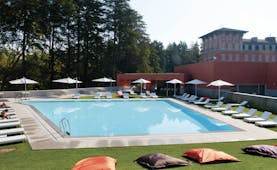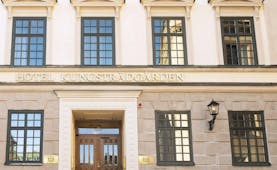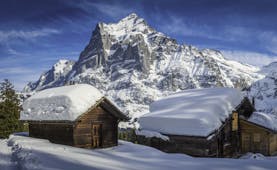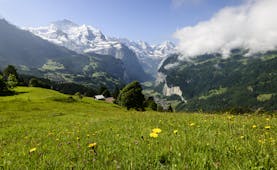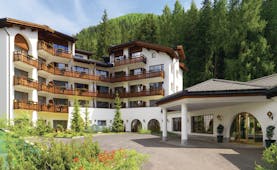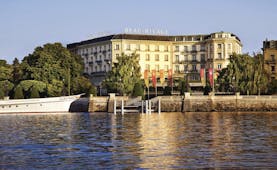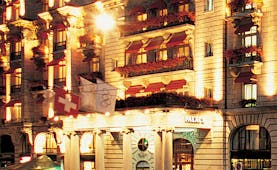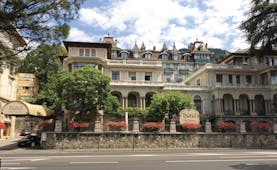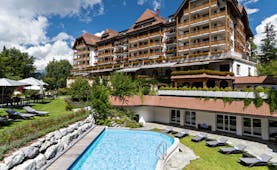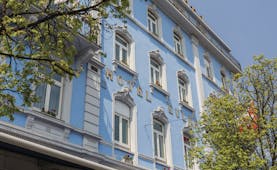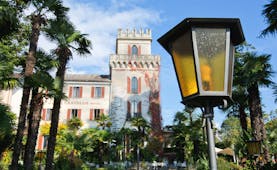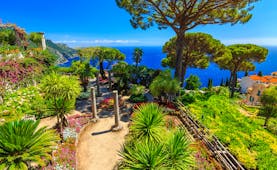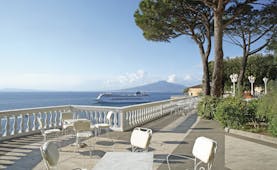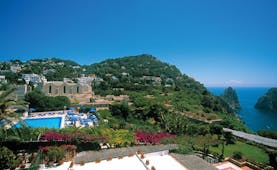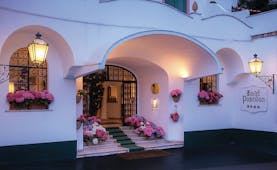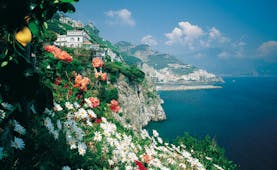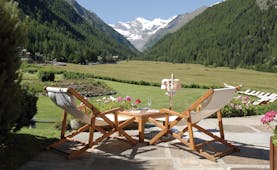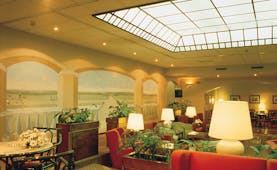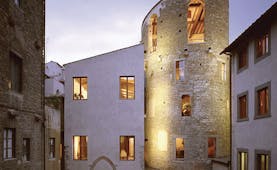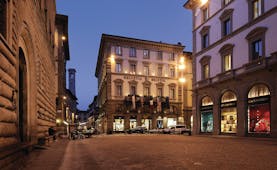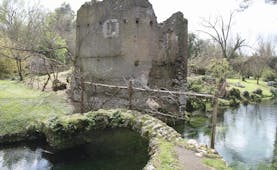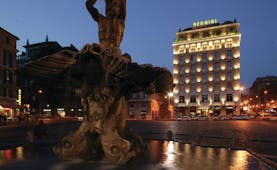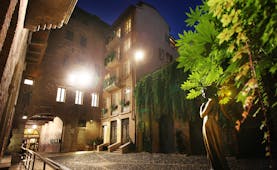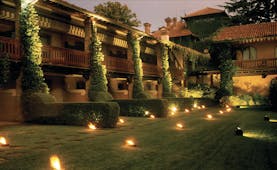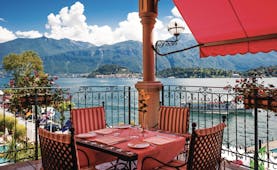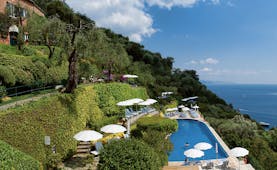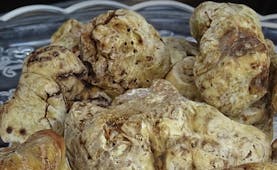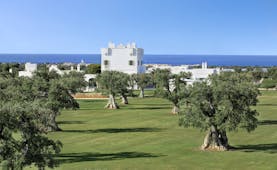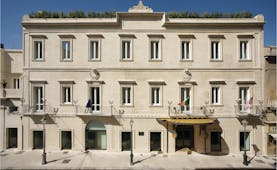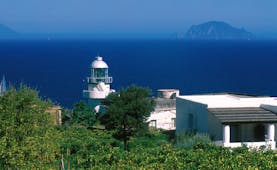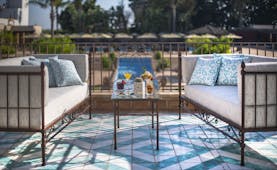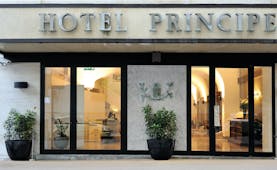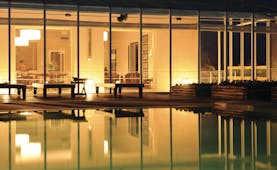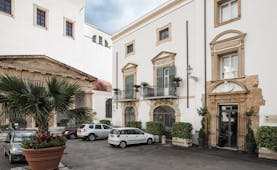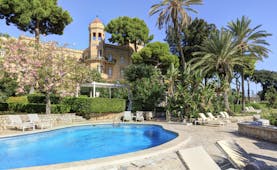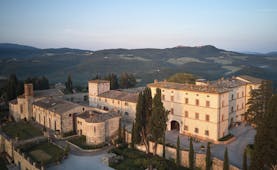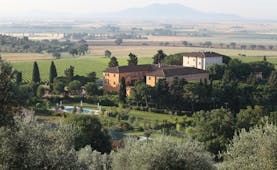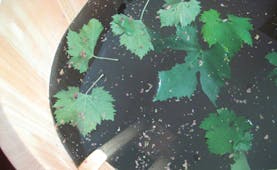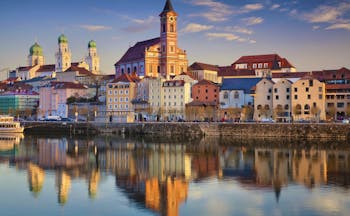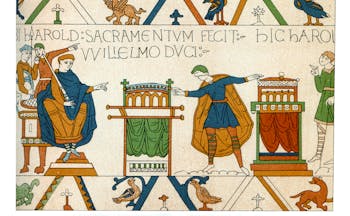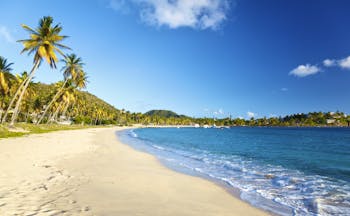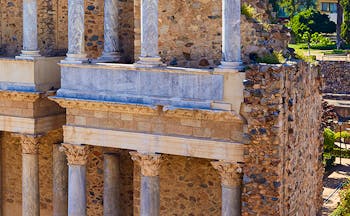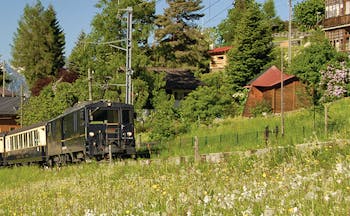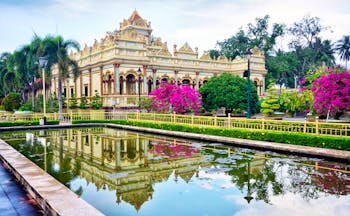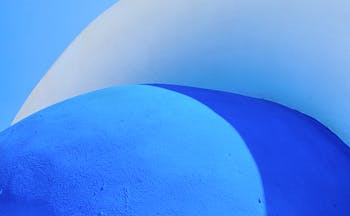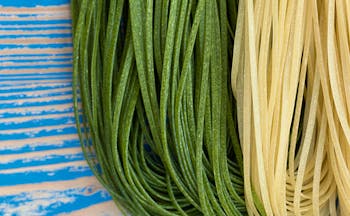Luxury rail tailor*made holiday to Venice and the Veneto by train
This 9-night Italian luxury rail holiday is an exploration of the Veneto and Venice but with the interesting additions of overnight stops in Munich and Zurich and two day-time scenic rail journeys through the Alps, southbound through the Brenner and northbound through the Gotthard. Lying south of the Dolomites and north of the Gulf of Venice on the Adriatic, the Veneto is a region of almost unsurpassed scenic variety as well as being outstandingly rich in cultural, particularly architectural, treasures. From the vine and orchard covered foothills in the north, with its wine-producing villages of alpine-style architecture and Romanesque churches the land gives rise to small towns on canals and rivers, often with ancient cathedrals, arcaded squares and covered bridges. Tall, elegant campanile are a feature of the towns near the coast and nearby are a wealth of Palladian villas waiting to be discovered. On the coast there is not only the great, unique city of Venice but smaller gems such as the ancient Roman town of Aquileia. The smaller cities of Padua, Vicenza and Verona are also nearby and worth exploring. You start this rail holiday with a day-time train journey from London to Munich, stopping for two nights to explore the Bavarian capital before taking the train south over the Brenner to Venice. You have three nights in Venice before taking the train to the city of Vicenza before collecting a hire-car for the short journey to your hotel nearby. Three nights are spent in the Veneto with a wealth of both excursion and relaxation possibilities. Your return journey to London by train takes you northbound through the Gotthard to Zurich for a night before returning to London via Paris.
Highlights
Munich • Venice • Visit the islands of Murano and Burano • Visit the Guggenheim • Veneto • Visit Verona • Visit the Valpolicella vineyards • Visit Palladian villas near Vicenza
Day by day
Your rail holiday to Venice and the Veneto starts with a mid-morning Eurostar from St Pancras. From the Gare du Nord, you can walk to the Gare de l’Est where you take the high-speed TGV train to Munich, arriving there at about 21.30 hrs that evening. You stay in Munich for two nights.
Munich, the capital of Bavaria, is situated within sight of the Alps. Munich is an elegant and beautiful, affluent German city with well-preserved historic buildings, palaces, gardens, imposing monuments and churches. At the heart of the city is the Marienplatz, home to the Old and New Town Halls (watch the famous Glockenspiel). Nearby is the Viktualienmarkt and the Frauenkirche as well as the Michaelskirche, which is the largest Renaissance church north of the Alps. From the centre the city fans out into boulevards, parks, gardens and imposing museums, including the famous Alte Pinakothek and Neue Pinakothek. The Residenz palace is a feast of architectural styles combining Renaissance, Baroque, Roccoco and Classicism. There are 130 rooms filled with rich furniture, paintings and tapestries. The English Garden is one of the largest urban gardens in the world and it offers restaurants, teahouse and beer gardens. Further afield you find Baroque palaces such as Nymphenburg, BMW headquarters and the Olympic Park from 1972.
You leave Munich late morning on the Eurocity train. It heads southwards into Austria, passing through Innsbruck and the Alps including the scenic Brenner Pass before it descends into the northern Italian plain. This is a direct service and you arrive into Venice in the early evening. At Santa Lucia station you are met and taken by private water taxi to your hotel.
You have two full days in Venice. More than a city, Venice “La Serenissima” is an enchantress. Take the time to discover her winding streets, canals, quiet squares and lively waterfronts. To make the most of your time in Venice, it’s worth dividing the city into areas or themes. The obvious place to start is at St Mark’s Square, best appreciated whilst sipping a Venetian coffee at Florian’s. St Mark’s Basilica, the Doge’s Palace and the Campanile can all be visited. The magnificent churches of Venice are worth seeking out: Santa Maria della Salute, Ss Giovanni e Paolo, and Santa Maria Gloriosa dei Frari (with works by Titian), Santa Maria dei Miracoli and the Gesuiti. The Jewish quarter can be found just off the Strada Nova to the north of the city and gives you a rare insight into the history of the Jewish community in Venice. There is a clutch of art galleries to be enjoyed including the Ca’ Pesaro, the Ca’ d’Oro, the Galleria dell’Accademia, the Scuola di San Rocco and for modern art, the Peggy Guggenheim Collection. The streets of Venice also contain a treasure trove of tiny artisan shops selling glassware, masks, lace and silk, and shoes. To absorb the magic of Venice from the water, treat yourself to a ride in a gondola. Across the lagoon, and reached by vaporetto, are the islands of Burano, home to lace-making and fishermen, and Murano, where master craftsmen offer demonstrations of glass-making before you enter their shops.
This morning there is time to do some last-minute sightseeing or shopping in Venice before your private water taxi takes you back to Venice Santa Lucia station for your train to Vicenza. The journey time by train is only about an hour. In Vicenza you collect your hire-car and drive to your hotel just outside the city, where you will be based for three nights.
From your base in the Veneto near Vicenza, there are numerous excursion possibilities for the two days you have here. An obvious choice is to go into Verona and explore this small but beautiful city, packed full of places of historic and cultural worth, particularly dating from Roman and mediaeval times. There are not only iconic sights such as the Arena and the house said to be Juliet’s, but other Roman remains such as the Roman theatre, the Ponte di Pietra and Porta Borsari, and mediaeval masterpieces such as the Basilica of San Zeno Maggiore, the Basilica of San Lorenzo and the church of Santa Maria Antica, as well as the Piazza delle Erebe. Within and near the city are several notable gardens worth a visit, including the Giardino Giusti. The small city of Vicenza is renowned for its Palladian architecture and many of the Palladian villas in the countryside nearby can be visited. To the north of Vicenza is the charming town of Asolo and also the Prosecco vineyards. If you do not want to have the use of a hire-car, you can be based at the hotel in Vicenza but you will be restricted in what you can visit. Or, if you prefer we can arrange accommodation for you in Verona.
You drive back into Vicenza and return your hire-car before taking a mid-morning train to Milan where you change and continue your north through the Swiss Alps and Gotthard Pass to Zurich. You reach Zurich by late afternoon or early evening, but in good time to stroll the Bahnhofstrasse for window shopping, visit the lake promenade and find a restaurant serving Swiss specialities for supper.
You leave Zurich late morning and travel back to Paris on the high-speed TGV train. Change between stations in Paris from the Gare de Lyon to the Gare du Nord by taxi and end your rail holiday by taking the Eurostar from Paris to London where you arrive mid-evening.
I was hoping to contact you yesterday to say HOW much we enjoyed our trip. Firstly, both hotels were superb in every way. The staff at the Kozmo in Budapest could not have been more accommodating. Thank you so much for arranging everything. Enjoyed Budapest itself but perhaps not long enough! Salzburg was lovely, a wonderful Christmas Market.Mrs K, Nov 2024
Holiday price guide Price from £2,640 per person based on two people sharing a double room in a 4-star hotel or from £3,060 in a 5-star hotel including second class rail travel. Supplement from £570 per person for first class rail travel.
Holiday Code ITBR06
Call us on 01392 441245
Luxury rail tailor*made holiday to Venice and the Veneto by train
Your rail holiday to Venice and the Veneto starts with a mid-morning Eurostar from St Pancras. From the Gare du Nord, you can walk to the Gare de l’Est where you take the high-speed TGV train to Munich, arriving there at about 21.30 hrs that evening. You stay in Munich for two nights.
Munich, the capital of Bavaria, is situated within sight of the Alps. Munich is an elegant and beautiful, affluent German city with well-preserved historic buildings, palaces, gardens, imposing monuments and churches. At the heart of the city is the Marienplatz, home to the Old and New Town Halls (watch the famous Glockenspiel). Nearby is the Viktualienmarkt and the Frauenkirche as well as the Michaelskirche, which is the largest Renaissance church north of the Alps. From the centre the city fans out into boulevards, parks, gardens and imposing museums, including the famous Alte Pinakothek and Neue Pinakothek. The Residenz palace is a feast of architectural styles combining Renaissance, Baroque, Roccoco and Classicism. There are 130 rooms filled with rich furniture, paintings and tapestries. The English Garden is one of the largest urban gardens in the world and it offers restaurants, teahouse and beer gardens. Further afield you find Baroque palaces such as Nymphenburg, BMW headquarters and the Olympic Park from 1972.
You leave Munich late morning on the Eurocity train. It heads southwards into Austria, passing through Innsbruck and the Alps including the scenic Brenner Pass before it descends into the northern Italian plain. This is a direct service and you arrive into Venice in the early evening. At Santa Lucia station you are met and taken by private water taxi to your hotel.
You have two full days in Venice. More than a city, Venice “La Serenissima” is an enchantress. Take the time to discover her winding streets, canals, quiet squares and lively waterfronts. To make the most of your time in Venice, it’s worth dividing the city into areas or themes. The obvious place to start is at St Mark’s Square, best appreciated whilst sipping a Venetian coffee at Florian’s. St Mark’s Basilica, the Doge’s Palace and the Campanile can all be visited. The magnificent churches of Venice are worth seeking out: Santa Maria della Salute, Ss Giovanni e Paolo, and Santa Maria Gloriosa dei Frari (with works by Titian), Santa Maria dei Miracoli and the Gesuiti. The Jewish quarter can be found just off the Strada Nova to the north of the city and gives you a rare insight into the history of the Jewish community in Venice. There is a clutch of art galleries to be enjoyed including the Ca’ Pesaro, the Ca’ d’Oro, the Galleria dell’Accademia, the Scuola di San Rocco and for modern art, the Peggy Guggenheim Collection. The streets of Venice also contain a treasure trove of tiny artisan shops selling glassware, masks, lace and silk, and shoes. To absorb the magic of Venice from the water, treat yourself to a ride in a gondola. Across the lagoon, and reached by vaporetto, are the islands of Burano, home to lace-making and fishermen, and Murano, where master craftsmen offer demonstrations of glass-making before you enter their shops.
This morning there is time to do some last-minute sightseeing or shopping in Venice before your private water taxi takes you back to Venice Santa Lucia station for your train to Vicenza. The journey time by train is only about an hour. In Vicenza you collect your hire-car and drive to your hotel just outside the city, where you will be based for three nights.
From your base in the Veneto near Vicenza, there are numerous excursion possibilities for the two days you have here. An obvious choice is to go into Verona and explore this small but beautiful city, packed full of places of historic and cultural worth, particularly dating from Roman and mediaeval times. There are not only iconic sights such as the Arena and the house said to be Juliet’s, but other Roman remains such as the Roman theatre, the Ponte di Pietra and Porta Borsari, and mediaeval masterpieces such as the Basilica of San Zeno Maggiore, the Basilica of San Lorenzo and the church of Santa Maria Antica, as well as the Piazza delle Erebe. Within and near the city are several notable gardens worth a visit, including the Giardino Giusti. The small city of Vicenza is renowned for its Palladian architecture and many of the Palladian villas in the countryside nearby can be visited. To the north of Vicenza is the charming town of Asolo and also the Prosecco vineyards. If you do not want to have the use of a hire-car, you can be based at the hotel in Vicenza but you will be restricted in what you can visit. Or, if you prefer we can arrange accommodation for you in Verona.
You drive back into Vicenza and return your hire-car before taking a mid-morning train to Milan where you change and continue your north through the Swiss Alps and Gotthard Pass to Zurich. You reach Zurich by late afternoon or early evening, but in good time to stroll the Bahnhofstrasse for window shopping, visit the lake promenade and find a restaurant serving Swiss specialities for supper.
You leave Zurich late morning and travel back to Paris on the high-speed TGV train. Change between stations in Paris from the Gare de Lyon to the Gare du Nord by taxi and end your rail holiday by taking the Eurostar from Paris to London where you arrive mid-evening.
I was hoping to contact you yesterday to say HOW much we enjoyed our trip. Firstly, both hotels were superb in every way. The staff at the Kozmo in Budapest could not have been more accommodating. Thank you so much for arranging everything. Enjoyed Budapest itself but perhaps not long enough! Salzburg was lovely, a wonderful Christmas Market.Mrs K, Nov 2024
Holiday price guide Price from £2,640 per person based on two people sharing a double room in a 4-star hotel or from £3,060 in a 5-star hotel including second class rail travel. Supplement from £570 per person for first class rail travel.
Holiday Code ITBR06
Our prices include
● Second-class travel on all trains, with standard class on Eurostar (first and standard premier can be booked at a supplement)
● Private return water taxi transfers from Venice Santa Lucia station to the hotel
● Hire of a group B car for 3 days from Vicenza back to Vicenza
● 2 nights’ bed and breakfast Standard room at the Hotel Torbrau in Munich
● 3 nights’ bed and breakfast in a Standard room at the Hotel Bisanzio or in a Classic room at the Ca’Sagredo in Venice
● 3 nights’ bed and breakfast Standard room at the Villa Michelangelo, Vicenza
● 1 night’s bed and breakfast in a Comfort room at the Hotel St Gotthard, Zurich
● Concierge service and Expressions Holidays regional helpful hints
Our prices do not include
● Early check-in or late check-out at any hotels (although we can arrange this on request at additional cost)
● Any other services not mentioned above, such as transfers and meals except breakfast at hotels
● Personal holiday insurance. This is essential and cover should be in place from when you book the holiday.
● Local tourist tax, usually between Euros 1 and 3 per person per night, and payable locally to the hotel
● Transfers in Paris, Munich and Zurich
Call us on 01392 441245
Luxury rail tailor*made holiday to Venice and the Veneto by train

Hotel Torbräu is a good-quality, comfortable four-star hotel in an excellent location. Modern, chic interiors and a choice of excellent dining facilities make it an ideal spot to recuperate after enjoying the delights of Munich.
Standard double
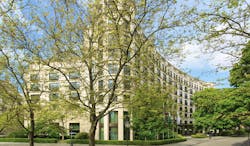
The Charles Hotel is a spacious and contemporary 5-star property in an excellent location near Königsplatz. An excellent range of facilities, including an indulgent spa and gourmet dining choices make this an excellent haven after enjoying the delights of Munich.
Classic double
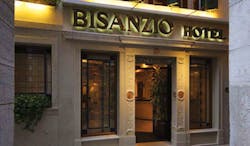
Hotel Bisanzio is an elegant 4-star hotel, which exudes historical charm, in an excellent position for exploring the main sights of Venice.
Standard double
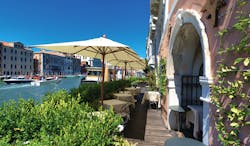
Ca'Sagredo is a grand 5-star palazzo hotel overlooking Venice's Grand Canal. The delicious cuisine, art gallery and museum afford guests a unique city stay that reflects the culture of the surrounding city.
Classic double

Villa Michelangelo is an elegant, historic 4-star boutique hotel near the fascinating city of Vicenza. The hotel emphasises the beauty of the countryside surroundings, with breath-taking views of the Berici Hills, alongside gourmet cuisine for a restorative retreat.
Classic double room

Hotel St Gotthard is a sophisticated 4-star hotel in an excellent central location. Haute cuisine and stylish, comfortable accommodation make this an excellent spot to recuperate after enjoying the cultural delights of Zurich.
Comfort double

Hotel Storchen is an elegant and refined 5-star boutique hotel in a beautiful waterfront location. Delicious cuisine and luxurious accommodation make this an excellent spot to recuperate after enjoying the cultural and historical delights of Zurich.
Classic room - at a supplement
I was hoping to contact you yesterday to say HOW much we enjoyed our trip. Firstly, both hotels were superb in every way. The staff at the Kozmo in Budapest could not have been more accommodating. Thank you so much for arranging everything. Enjoyed Budapest itself but perhaps not long enough! Salzburg was lovely, a wonderful Christmas Market.Mrs K, Nov 2024
Holiday price guide Price from £2,640 per person based on two people sharing a double room in a 4-star hotel or from £3,060 in a 5-star hotel including second class rail travel. Supplement from £570 per person for first class rail travel.
Holiday Code ITBR06
Call us on 01392 441245
Luxury rail tailor*made holiday to Venice and the Veneto by train
About Germany
An Expressions tailor-made holiday to Germany enables travellers to experience a fascinating and richly varied country. Germany is replete with regional quirks and personalities - a strong feature of German life and a hangover from the days, not too long ago, when the country was once a patchwork of independent states. Today, to travel from the ancient ports of the north, across the open fields of the German plain, and down through the Ruhr and onto the forests, mountains and cosmopolitan cities of Germany’s Bavarian south, you’ll experience an intriguing variety as great – and appealing – as you’d find anywhere else in Europe. Several of Germany’s cities have the air of national capitals. Cologne, though enmeshed in one of Europe’s most intensively industrialised regions, is rich in monuments. Bavaria’s capital, Munich, is another star attraction, with great museums and galleries. Berlin, the nucleus of the turmoil of reunification, is now one of the most sophisticated, artistic and exciting cities on the planet, while Nuremberg is thrillingly ancient, with the most charming of winter markets in the 11th century square, and summer festivals when the cobbled streets come alive with street artists and musicians. Scattered between these city big-hitters, quieter, utterly charming cities and large towns abound, with medieval old towns straight out of fairy-tale picture books. Heidelberg, the oldest university town in Germany, is an absolute gem, nestling between wooded hills on the banks of the Neckar river, a setting that has seduced visitors ever since the days of the Grand Tour. But from Trier to Bamberg, Marburg to Meissen, Regensburg to Rothenburg, enchanting old towns abound. Beyond Germany’s beautiful cities and towns, the Bavarian Alps, right on Munich’s doorstep, are a spectacular playground for hikers and bikers, horse-riders and skiers. The Rhine and Mosel are both littered with castles and vineyards, offering an enchanting backdrop for the cruise boats that drift serenely along their waters. And stretching more than 100 miles north to south, and 45 miles from east to west, the Black Forest is awash with pretty spa towns and exquisite health resorts, crisscrossed with walking trails. The Black Forest also boasts some of the most spectacular rail journals on the planet. A beautiful, intriguing country vastly at odds with its stiff stereotype, Germany is a wonderful holiday destination for active outdoorsy types and city-breakers alike.
Highlights of Germany
Berlin’s world-class museums, bustling bars, galleries and monuments; Rugen Island, with its rugged chalk cliffs, windswept beaches, Romantic-era spa architecture and tree-lined country roads; Dresden, with its baroque beauty on the banks of the majestic Elbe; Cologne’s magnificent cathedral; the UNESCO World Heritage city of Bamberg; the sandy dunes of Sylt, a North Sea island with fabulous beaches and surf; the beer halls of Munich, ideally in September during the Oktoberfest; Lubeck, a Hanseatic gem; Muritz National Park, where you can go paddling and camping in a paradise teeming with birds; Bremen, a metropolis in miniature, with lovely red-brick and Art Nouveau architecture; the Alpine resorts of Bavaria, including Berchtesgaden, with dramatic peaks, dreamy lakes and superb walking trails; drive or cruise along the Rhine or Mosel, visiting castles, medieval villages and superb vineyards along the way; the walled medieval towns of Rothenburg and Trier, both with wonderful Christmas markets; the Christmas market at Nuremberg, oldest – and still most picturesque – in the world.
Facts in brief
Capital BerlinAirport Several airports are served from the UK, including Berlin, Bremen, Cologne-Bonn, Dortmund, Dresden, Dusseldorf, Frankfurt, Hamburg, Hannover, Stuttgart and Munich.
Size 137,000 sq. miles
Population 82 million
Call us on 01392 441245
Luxury rail tailor*made holiday to Venice and the Veneto by train
About Zurich
Zurich is a city that adapts to and flourishes in every season. In the summer, it is a cosmopolitan haven of designer boutiques, riverside pavement cafes, 50 museums, and over 100 galleries; and, in the winter, the streets of grand townhouses, churches, and palaces are transformed into a veritable winter wonderland. Step outside the city and you are immediately cast back into rural, Alpine Switzerland as the landscape becomes more dramatic and Lake Zurich dominates the plethora of natural interest sites. Towns such as Winterthur and Uster are home to their own range of traditions and their own character, with architecture and cuisine that reflects both the proximity of the German border and a proud Swiss national identity. With such close proximity to Zurich airport and the major railway lines, Zurich is an excellent first or last stop on a touring holiday.
Highlights of Zurich
The capital of the German-speaking canton of Zurich is the internationally-renowned historic city of Zurich. The perfect place to acclimatise to the Swiss way of life, there is much cultural discovery to be done. Perhaps begin with the waters of Lake Zurich and the River Limmat, taking a scenic boat cruise, or hiring a dingy for a more hands-on approach. Pedal boats offer a happy medium, and the lakefront Badi-Bars are beautifully situated for an evening drink afterwards. To witness the beauty of the city from above, climb to the top of the Karlsturm, one of the Grossmunster Church's two iconic towers. On the banks of the River Limmat is Schipfe, Zurich's oldest district. It was once the headquarters of the silk industry, and home to many tranquil bathhouses and the workshops of boat-builders; now, however, it has a very serene atmosphere that attracts artisans as well as visitors looking for peaceful strolls down quaint streets. The Lindenhof District was the site of a Roman fort in the 4th century, and Charlemagne's grandson's palace in the 9th century. Today, it is a popular meeting place for Zurich's residents. For a sweeping view of Zurich's Old Town, walk along the promenade in the Niederdorf District. Here, shops are hidden down narrow alleyways, old-fashioned grocery stores sell the local produce, and the views of grand stone buildings are topped off by the Grossmunster's towers. Everywhere in Zurich, however, there are pockets of outstanding beauty, be it beside the 1,200 fountains of drinkable water, on the historic Little Red Train, or Polybahn, that takes you up to the Polyterrasse, or on the world's most luxurious shopping mile, the Bahnhofstrasse.
Cultural highlights of Zurich
Informative cultural experiences can be had at a number of locations around the city. The Kunsthaus Art Museum exhibits a range of permanent and temporary displays by artists of international and local acclaim. The Museum Rietberg exhibits a range of non-European artistic and cult objects. The Arthouse Cinemas are known throughout Europe for the rare opportunity they provide to view independent films in a cinema setting. For innovative modern art, visit the Migros Museum or the Kunsthalle at Lauenbrau-Areal. More unique artistic ventures can be found at the Bruno Weber Park and Cabaret Voltaire, the birthplace of Dadaism. The so-called ‘Home Mountain,' or Uetliberg, is beautifully quilted in rich, dense forest and looks out across the city rooftops below and the blue waters of Lake Zurich. The Uetliberg Railway takes you up to the top of the mountain in no time at all, or it is possible to walk to the summit in less than two hours. Venturing outside the city, you may want to spend a day enjoying the natural scenery. At Rapperswil on Lake Zurich you can step out to the lake's centre to take in the 360 degree panoramic views. Also only a short distance away by rail is the majestic Rhine Falls, the largest plain waterfall in Europe. Stretching 150m across, the sight of the tumbling, crashing water is fantastic and well-worth the train ride. Kyburg Castle, once the home of the Counts of Kyburg and then the Habsburgs, is a magnificent and eerie insight into medieval life, torture, food, and the illustrious heritage of the area. An unseal, irregular pentagon, the castle fits perfectly onto the small hill on which it sits, cradling a picturesque courtyard. At night, the stone walls and square-pyramidal roofs are atmospherically lit from the ground with golden light. The museum housed within introduces visitors to everything medieval, from military fashion to the produce of the authentic vegetable garden. The city of Winterthur, though considerably smaller than Zurich, will be a highlight of your trip. Besides its 17 museums, including the Oskar Reinhart ‘Am Romerholz’ collection of 14th to 20th century art, Winterthur has the largest pedestrianised Old Town in Switzerland. Mansions line the petite squares, and the City Church with its red-topped towers and the Fisher Maiden's Fountain give it exceptional character. The Town Hall Passage remains a famous and popular attraction. Winterthur is also home to a prestigious Centre for Photography, a Casino Theatre, and the Swiss Science Centre Technorama. To end your day in Winterthur, or your stay in the Zurich Region, locate your favourite of the garden city's parks to sit back and enjoy the late afternoon sun.
Festivals in Zurich
In Zurich, the festivals and cultural events generally celebrate modern, artistic accomplishments, spotlighting international, not just local, stars. The Zurich Film Festival, for example, runs from the 22 September to the 2 October, and the Zurcher Theater Spektakel runs from August 13 to September 4. Winterthur plays host to the International Short Film Festival, the Winterthurer Musikfestwochen, and the Afro-Pfingsten. One alternative festival is the Dorflifascht in the Niededorf District at the end of August, when music, markets, food stalls, and shows take over the streets and squares. The Food Zurich festival will be held annually at the end of September, as of 2016, featuring fine, gourmet food sold at stalls by local restaurants and producers. Each year, the Manifesta takes on popular cultural and political issues, and deals with them through art over a period of up to 100 days.
Gastronomy in Zurich
The cuisine in Zurich is very typically Swiss, meaning that trying the chocolate, particularly by Lindt, Laderach, and Vollenweider is a must, along with the Luxemburgerli macaroons. A key dish in Zurich is the Zurcher Geschnetzeltes, a veal and mushroom ragout with kidney and sweetbreads that originated in the city. Rosti, fondue, and raclette remain popular this far northeast, as does the traditional Stubli. For a very traditional Swiss meal, head out to Rapperswil one evening. On your travels through Zurich, however, you will also come across a number of innovative restaurants serving creative cuisine, such as classic Swiss dishes using meat substitutes such as Tofu, or in unusual locations, such as the interior of an old mill.
Call us on 01392 441245
Luxury rail tailor*made holiday to Venice and the Veneto by train
About Veneto
An Expressions tailor-made holiday to Veneto incorporates the beauty, culture and heritage of this popular Italian region. Like its northern neighbour, Friuli, Veneto is cradled by the Dolomites to the north, the Venetian planes to the south, and the Adriatic to the east, giving it an almost unsurpassed scenic, cultural and architectural variety. Unlike Friuli, however, Veneto is one of the most visited regions in Italy, with Venice the undoubted jewel in its preposterously beautiful crown. While most people race through Veneto in their rush to get to Venice, the region is a veritable treasure trove of beautiful towns, many of them blessedly devoid of tourist crowds, who are elsewhere on the Venetian lagoon. Of these, Padua is a gem of a cobbled university town littered with Giotoa frescoes, Verona, home to Romeo and Juliet, is one of the prettiest ancient cities in Italy, Vicenza is the stunning ‘laboratory’ of Andrea Palladio, one of the most influential architects in history, and in Treviso, Veneto has a wonderful, scaled down version of Venice, complete with beautiful canals. That said, with flights into Venice, you could happily spend every holiday for the rest of your life in Veneto's celebrated capital. A staggeringly spectacular town, it does of course get busy in summer, but with no cars in the city centre, Byron's ‘fair city of the heart' has a peaceful, festive air even in high season, with a string of quieter, but equally enchanting, fascinating islands scattered around the lagoon, and an excellent network of ferries and vaporetti taking you there.
Highlights of Veneto
Veneto has a wealth of culture and interest to immerse yourself in, including: Venice carnival, an extravagant pageant making the city even more impossibly beautiful than normal; the islands of the lagoon, including Murano, famous for its glass-makers, whose workshops you can visit, and Burano, with its wonderfully colourful facades; Treviso, a scaled down Venice, great escaping the high-season crowds; Soave, a fairy-tale castle town famous for its wines; Albano, a classic 19th century thermal town; Lake Garda, flanked by lemon and olive groves, with the Dolomites reflected in its lakes, and 7,227ft Monte Baldo behind it, which you can reach by cable car; tiny village of Marostica, which stages a human chess game with ‘pieces' dressed in Renaissance costumes; Valpollicella, a lush valley strewn with family wineries; Padua and its Giotto frescoes; the Romanesque abbey of San Pietro di Foletto in Follina; numerous Palladian villas, including Bararao, Villa Emo, La Rotonda, Villa Godi and Villa Valmarana; Cima's masterpiece of an altarpiece in Conegliano cathedral; the August Palio in Feltre, with medieval games, horse racing and celebrations; Treviso's festival of dance, poetry and music in August; birdwatching on the Venice lagoon and Po delta; local cuisine, including Spaghetti alle Vongole and Prosecco from Conegliano; the fishing port of Chioggia.
Call us on 01392 441245
Luxury rail tailor*made holiday to Venice and the Veneto by train
About Venice
An Expressions tailor-made holiday to Venice is the chance to visit an enchanting and historical city. Venice, or ‘La Serenissima’ as it has been known for centuries, is truly unique and must be visited at least once in a lifetime. It is essentially a floating museum and was the main centre of trade for the north of Italy from the 13th century right through until the 17th century. The Venetian Republic was one of the richest in Europe and was presided over by the Doge who was elected by the Council of Ten, or the most powerful members of the governing families. The art and architecture that can be seen throughout the city is really a tribute to centuries of patronage and wealth. The Venetian lagoon also has numerous other islands, inhabited and uninhabited which used to grow crops and produce to feed Venice itself and which also used to house some of the cities’ industries such as glass making and lace making.
Cultural highlights of Venice
St Mark’s Square, Doge’s Palace, Bridge of Sighs, The Grand Canal, Accademia, Museo Correr, Rialto Bridge, La Fenice theatre, The Church of the Redentore, The Church of Santa Maria della Salute.
Festivals in Venice
Venice’s most famous festival is the Carnevale in February, the actual dates of Carnevale vary from year to year, but it generally spans three to four weeks ending on Shrove Tuesday. Costumed and masked people parade around the streets of Venice and there are numerous private parties and dances, but the atmosphere on the final night of Carnevale itself is electric. Alternatively, there is the Regata Storica on the first Sunday in September, when boats and gondolas race against each other along the Grand Canal, or the Feast of the Redentore in mid-July to celebrate the end of the plague in the 16th century. A makeshift bridge is constructed to link the Giudecca island with the Dorsodouro island and there is a huge firework display.
Gastronomy in Venice
Venetian food is naturally fish and sea food orientated and popular dishes include the sweet and sour ‘sardee in saor’ or sardine salad, cuttlefish risotto with its black ink and ‘caparossoi a scota deo’, which are large clams cooked with lemon and pepper. Liver is also popular as are several sweet fried delicacies or ‘fritole’, popular particularly around festival time. This area is famous for its Prosecco and is the home of the ‘Bellini’ cocktail.
Travel around Venice
Gondola rides are always popular, but are expensive. The vaporetto and motoscafo services are good and will take you from A to B and are essential to reach the islands of Murano, Burano and Torcello in the lagoon unless you hire a private water taxi. The services can be disrupted at high tide or ‘Aqua Alta’, which usually occurs in the autumn, or if the lagoon is particularly choppy. To cross the Grand Canal the precarious ‘traghetti’ are like large Gondolas, but you are expected to stand up in order for the maximum number of passengers to board, so it is an art, as well as an experience to remember!


